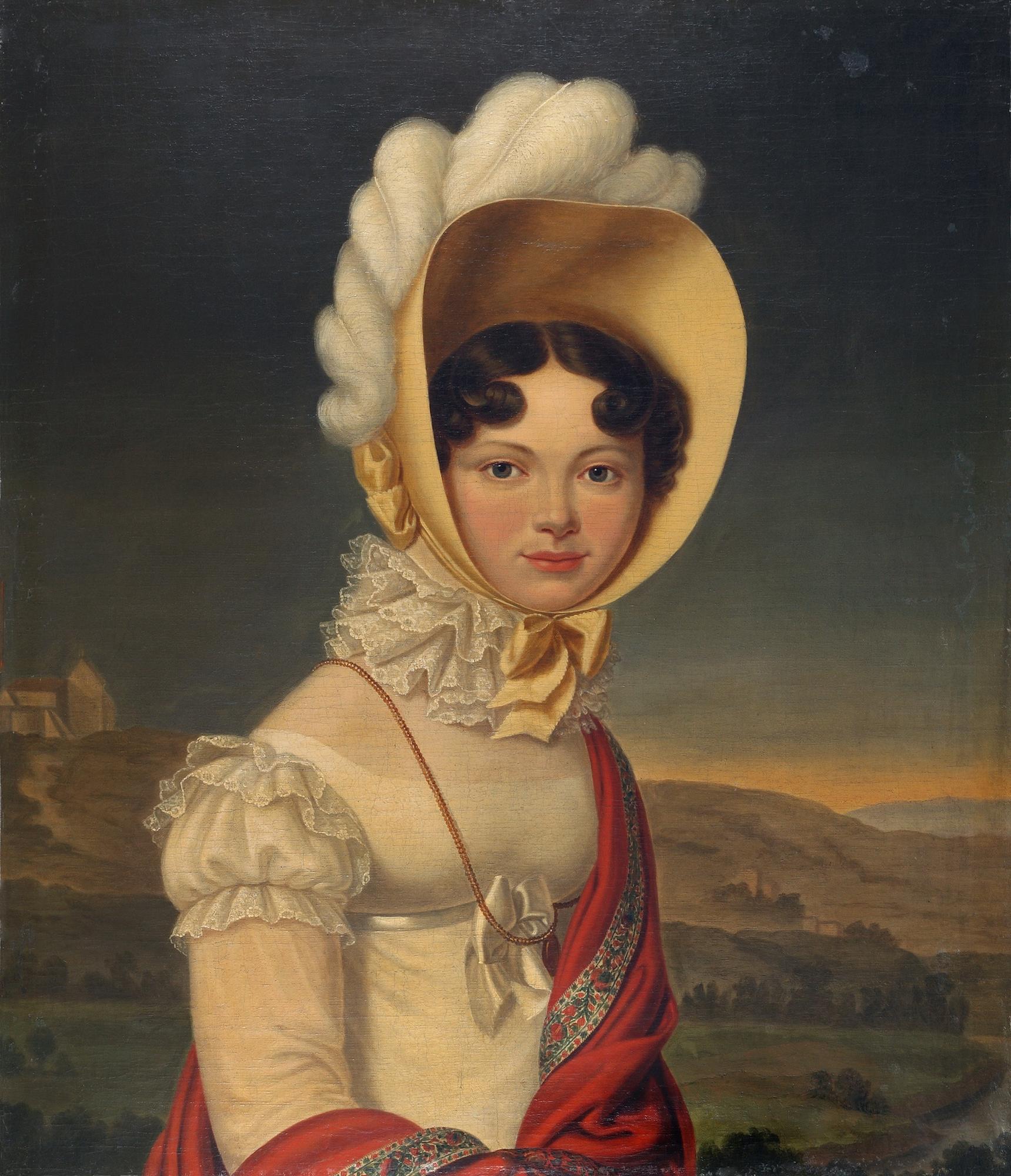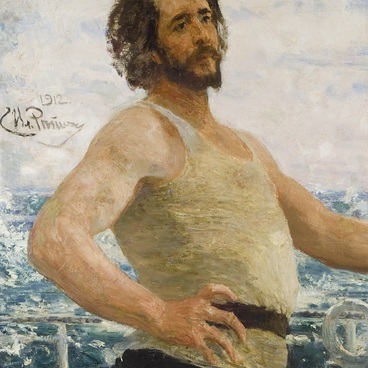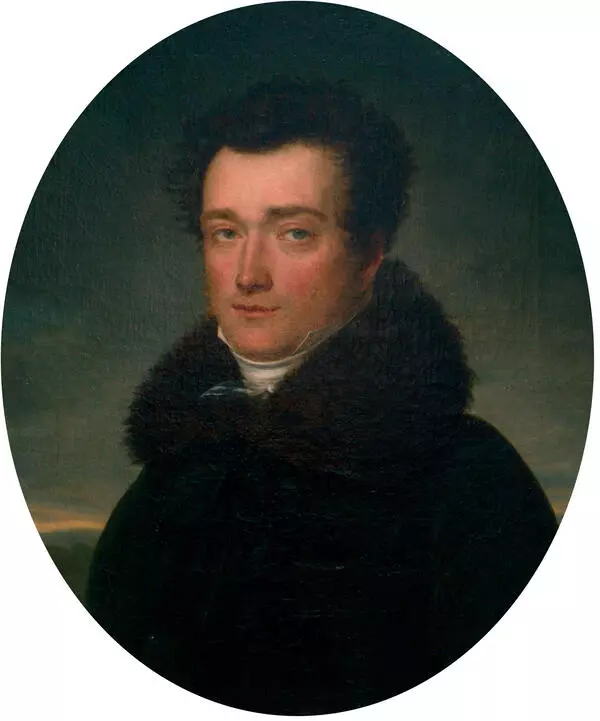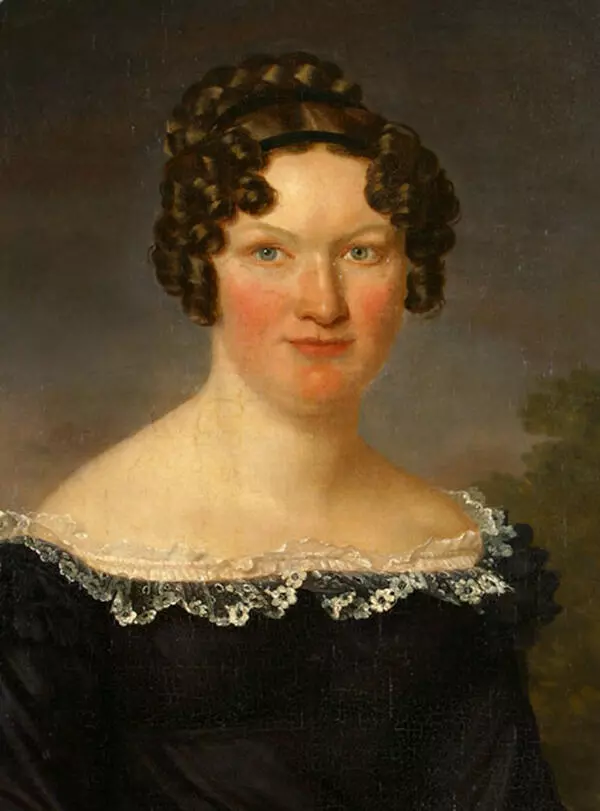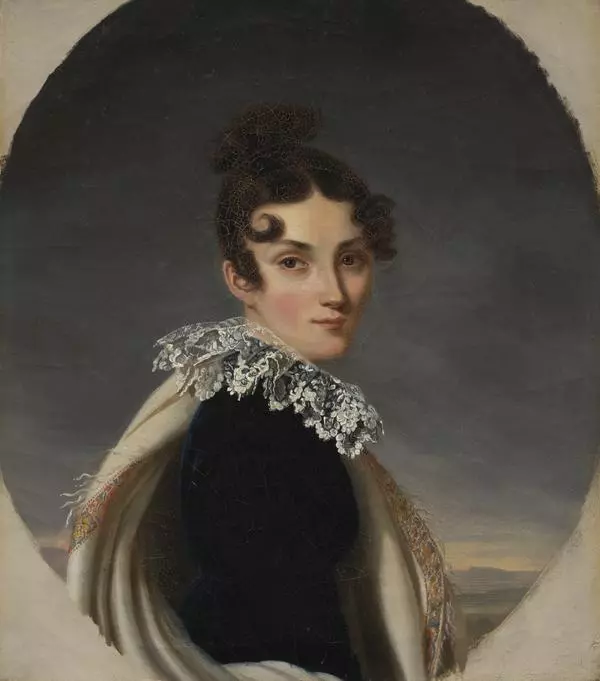Portrait of Grand Duchess Catherine Pavlovna was painted by the French artist Henri-François Riesener. He was born in 1796 in the arty family. His father Jean-Henri Riesener was a court furniture maker, and his uncle was a famous painter Eugene Delacroix. Henri Riesener studied painting at Jacques-Louis David’s workshop. He became extremely famous after his full-size portrait of Napoleon was replicated over 50 times.
Members of Russian nobility and the Imperial family were among Henri-François Riesener’s clients. The Grand Duchess Catherine Pavlovna, who was a daughter of Paul I, and a sister of Alexander I, is featured at the portrait. In a period between 1809 and 1812 she lived along with her husband Duke George of Oldenburg in Tver en route imperial palace. At the time prince was a governor general of Tver, Novgorod and Yaroslavl regions.
Catherine managed to turn the Palace into the magnet for conservative political quarters. Many famous people, such as Nikolai Karamzin, count Fyodor Rostopchin and others visited her salons and balls. Having acute mind and attractive appearance, Catherine quickly won people’s favour. “Grand Duchess Catherine Pavlovna is an extraordinary beauty; I have never met such angelic and at the same time clever face in my whole life; it appears to me even now, even though I am bad at drawing I can draw it quite similarly, ” told writer and playwright Stepan Zhiharev about her.
Henri Riesener depicted the Grand Duchess dressed in a light dress made of chiffon with the landscape background. Her image fully corresponds to the high society portraits of early 19th century (the static posture, luxury costume showing her position in society). It is worth to point that the artist paid special attention to the fabric texture: half-transparent chiffon, covering velvet, airy laces.
The portrait is interesting with its romanticist influence. Landscape is chosen for the background. For the Romanticist painters the idea of union of nature and people was very important, that is why the background and the foreground are united with the color combination, in this case gold and beige.
Members of Russian nobility and the Imperial family were among Henri-François Riesener’s clients. The Grand Duchess Catherine Pavlovna, who was a daughter of Paul I, and a sister of Alexander I, is featured at the portrait. In a period between 1809 and 1812 she lived along with her husband Duke George of Oldenburg in Tver en route imperial palace. At the time prince was a governor general of Tver, Novgorod and Yaroslavl regions.
Catherine managed to turn the Palace into the magnet for conservative political quarters. Many famous people, such as Nikolai Karamzin, count Fyodor Rostopchin and others visited her salons and balls. Having acute mind and attractive appearance, Catherine quickly won people’s favour. “Grand Duchess Catherine Pavlovna is an extraordinary beauty; I have never met such angelic and at the same time clever face in my whole life; it appears to me even now, even though I am bad at drawing I can draw it quite similarly, ” told writer and playwright Stepan Zhiharev about her.
Henri Riesener depicted the Grand Duchess dressed in a light dress made of chiffon with the landscape background. Her image fully corresponds to the high society portraits of early 19th century (the static posture, luxury costume showing her position in society). It is worth to point that the artist paid special attention to the fabric texture: half-transparent chiffon, covering velvet, airy laces.
The portrait is interesting with its romanticist influence. Landscape is chosen for the background. For the Romanticist painters the idea of union of nature and people was very important, that is why the background and the foreground are united with the color combination, in this case gold and beige.
